Why are my tomato seedlings turning yellow? The common culprits revealed, and how to remedy them
Do not panic, as there can be simple ways to rectify yellowing tomato seedlings
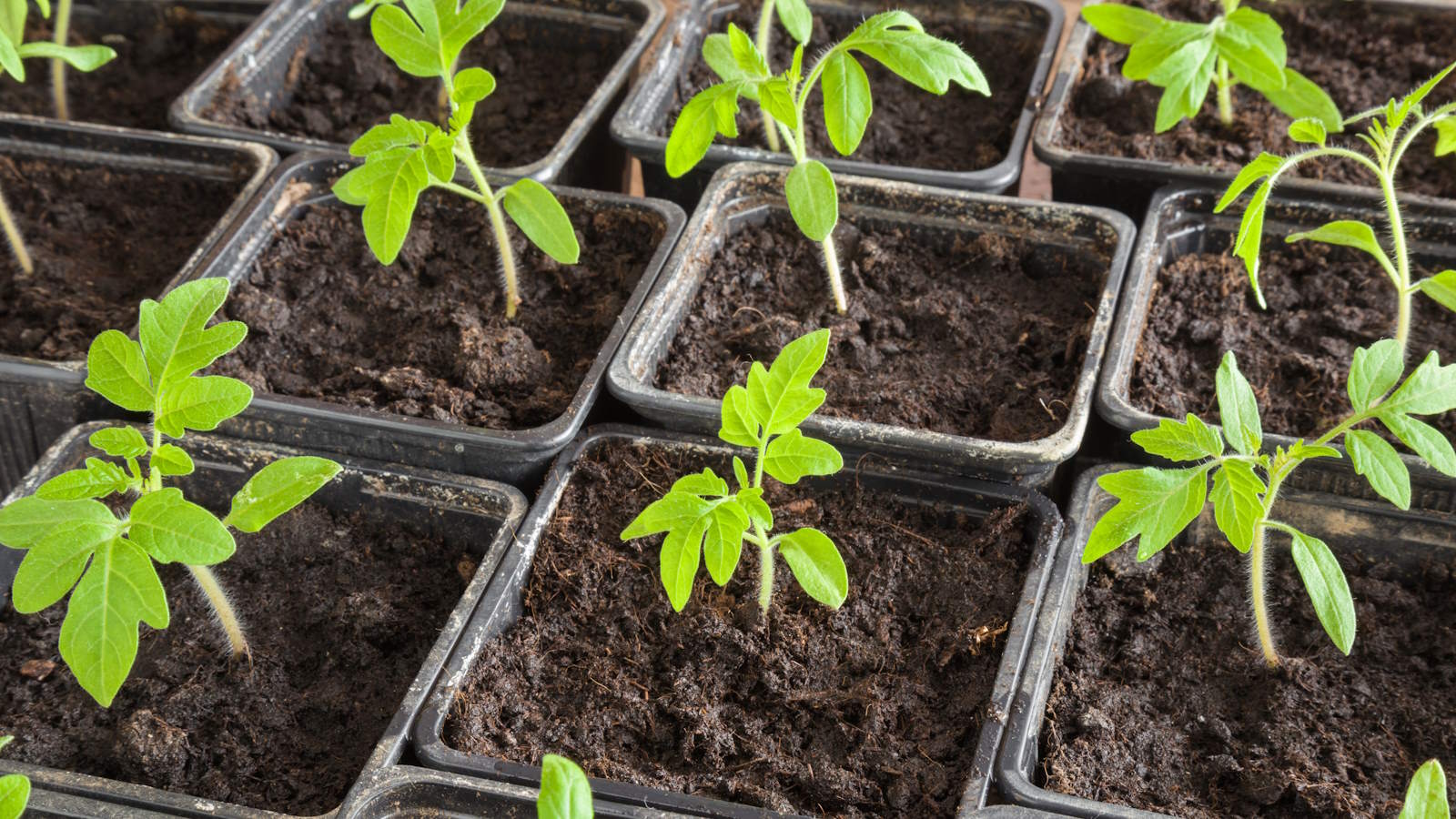

It's a worrying sight when your seedlings start to look unhealthy. The joys of seeing your tomato seedlings popping through the soil is thrilling, but you can be brought back to earth with a bump if the seedlings begin to turn yellow.
If you have ever been on this journey growing tomatoes, you may be left perplexed and wondering, why do my tomato seedlings have yellow leaves?
Fear not, yellow leaves on tomato seedlings do not mean all is lost. They are a warning sign and not a death knell. There can be several reasons why tomato seedlings turn yellow and that includes water, nutrients, light and potential disease.

Tomato seedlings grow quickly in the right conditions
4 reasons for yellow leaves on tomato seedlings
If your seedlings are discolored, it will likely be one of the reasons below. Let's take a closer look at each issue, what causes it, and how you can rectify the problem so your plants can move on and grow strongly to give you a bumper tomato harvest.
1. Water
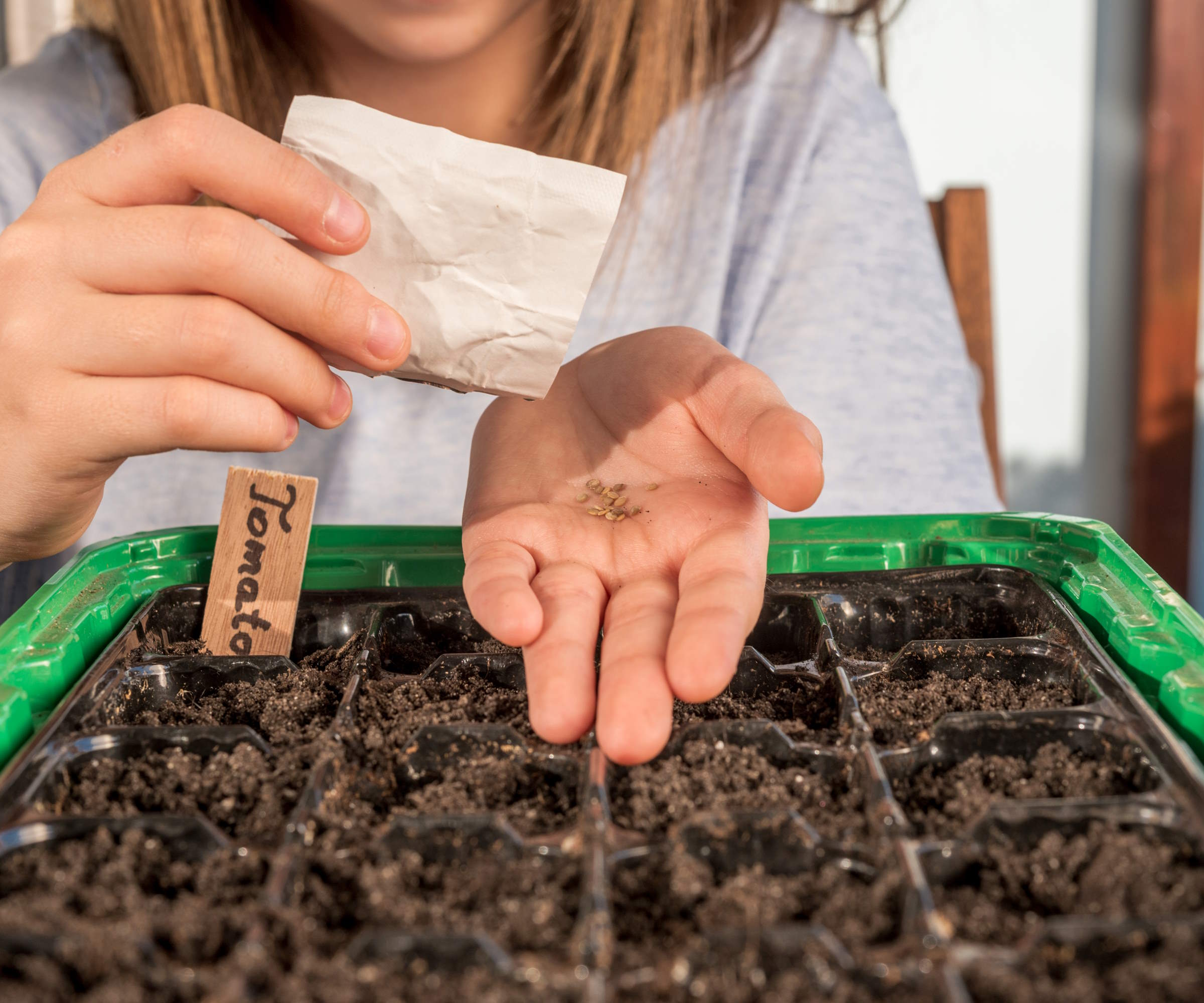
Correct watering is important for healthy seedlings
The most common issue that arises with seedlings is watering, both overwatering and underwatering. After you sow seeds you seek healthy seedlings. The worry about not giving them enough water can result in you killing them with kindness and giving them too much.
‘If you've been a bit too generous with the watering can, your sprouts might be suffering from wet feet, which can lead to root rot and prevent them from absorbing the nutrients they need and this can cause yellow leaves,’ says Kiersten Rankel, garden expert and botanist for the plant app Greg.
To help you judge how often to water seedlings, use your fingers to check the moisture levels in the soil. If the soil feels soggy, it has enough moisture and should dry out a bit before you add more water.
As well as yellow leaves, overwatering can cause mold to form on the soil your seedlings are in. This will not harm the seedlings but is a sign you are falling foul of the common seed-sowing mistake of overwatering.
Tomato plants want constant moisture to thrive, the soil should be kept moist but not waterlogged. A lack of water while the seedling develops could cause it to stress and turn yellow.
This can be a common problem if you sow seeds indoors in small cell blocks as the seedlings will dry out quicker the larger they grow. It is beneficial to transplant seedlings into larger individual pots to prevent this from happening.
If the soil feels dry, it is a sign the plant wants water. Watering plants from the bottom, by sitting them in a tray of water to soak up the moisture they need, can be a more efficient way of watering seedlings, especially those in trays.
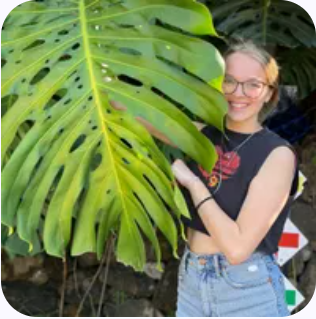
Kiersten Rankel is a certified Louisiana Master Naturalist and regularly volunteers with local community gardens and non-profits to help restore critical ecosystems along the Gulf Coast. In her spare time, she enjoys hiking and tending to her 150+ houseplants and vegetable garden.
2. Nutrients

Tomato seedlings will grow strongly with the right amount of nutrients
Nutrient deficiencies can cause the leaves of tomato seedlings to turn yellow, particularly a lack of the essential plant nutrients nitrogen and phosphorus.
Seeds contain all the nutrients they need to germinate and the best soil to start seeds in will not have added fertilizer, as seedlings can live off this food during their early stages. Once the seedlings need to be pricked out and potted on, after they have developed the first set of new leaves, they can benefit from fertilizer.
Adding slow-release balanced fertilizer to the potting mix can fertilize seedlings and provide nutrients until you plant the tomatoes in their final location. However, check any potting mix as some will have fertilizer in and you don't want to risk overfertilizing seedlings.
If you haven’t fertilized your tomato seedlings, the sight of yellow leaves might indicate they need a little invigoration. ‘Try giving them a half-strength dose of a balanced, water-soluble fertilizer to provide a quick nutrient boost and green up those leaves,’ advises Kiersten Rankel.

Ready-to-use plant food that has an NPK ratio of 0.02-0.02-0.02 and can be diluted to half-strength to feed seedlings.
3. Light

Tomato seedlings need lots of light for healthy growth
A lack of light is another common issue that can cause yellow leaves and leggy seedlings. Where you grow your tomato seedlings will impact their health, as well as when you sow the seeds.
Tomato seedlings want at least 6-8 hours per day of bright, indirect light. If they do not get enough light seedlings will get leggy and stretch towards the light. Without enough light for photosynthesis, the seedling won’t produce enough chlorophyll to keep the leaves green.
The ideal spots for tomato seedlings are in a greenhouse or on a sunny windowsill, but grow lights could be needed when growing indoors to supplement the light levels. Grow lights will be increasingly important the earlier you sow your tomatoes.
The seedlings want to be in an indirect light. If they are in a very hot and sunny spot then scorch can turn leaves yellow. If there is a risk of direct sunlight harming the seedlings, give them shade during the hottest parts of the day.

Equipped with super bright 6 Red+6 Blue+36 White LED beads, this indoor seedling light provides a full spectrum like sunlight to promote plant growth.
4. Disease
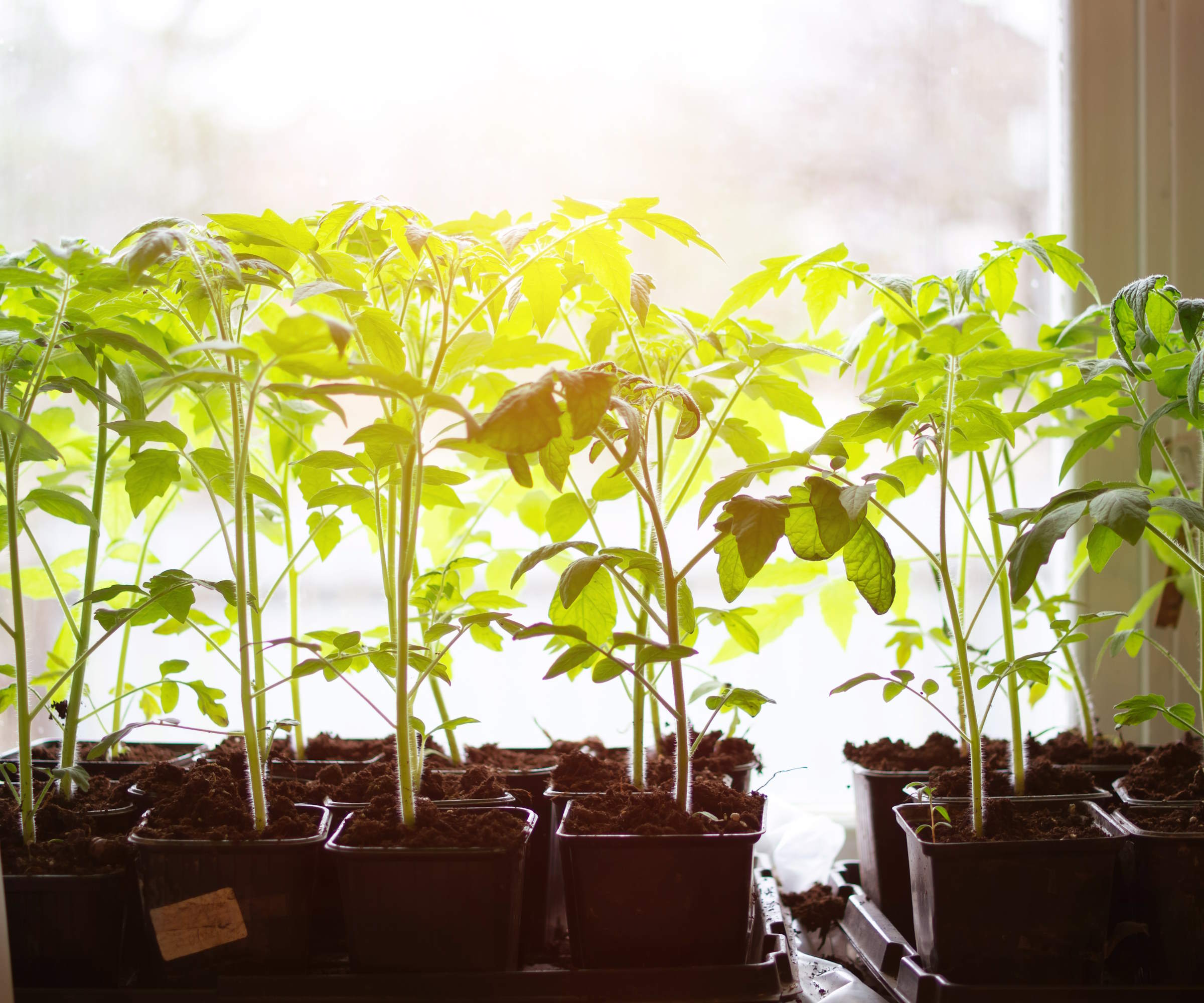
Yellow leaves on tomato seedlings can be rectified
Tomato leaves can turn yellow due to fungal problems and such issues can strike tomato plants at any age. Dave Freed, expert tomato grower and founder of Grow Tomatoes Easily, says: ‘It starts with fungus spores in the air landing on the leaves of the tomato plant then reproducing and spreading until the leaf is dead and eventually engulfing the entire plant.’
Tomatoes can be hit by diseases such as early blight, fusarium wilt, and botrytis, among other fungal issues. There are simple ways to prevent problems, including watering from below rather than above and controlling the humidity where the seedlings are.
Dave advises organic sulfur dust as a way to fix fungal issues if you do spot them. He recommends: ‘When you begin to see the yellow leaves apply asap the sulfur dust to tomato plants as a dust.....not as a spray where sulfur dust is mixed with water and sprayed on the leaves.’
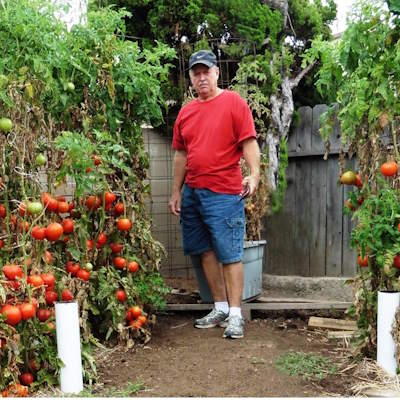
Dave Freed is known as Dave 'The Tomato Guy' and his website Grow Tomatoes Easily helps 1000’s of people every month
FAQs
How do you revive wilted tomato seedlings?
Wilted seedlings are primarily the result of a lack of moisture. If the soil dries out to the point of wilting, sit the seedling in a container of water, somewhere out of direct sunlight, to soak up water into the soil. The plant should recover once watered.
However, if the soil looks wet and the seedling is wilting this may be due to overwatering, so do not add more moisture. Hold off from watering the seedling until the soil dries out and adjust any watering regime going forward.
The month you start vegetable seeds indoors can mitigate any possible potential issues arising due to a lack of light or low temperatures. Tomatoes are crops you can plant from February onwards, however, if you do not have grow lights and a heated greenhouse it may be best to wait until March or early April to sow seeds.
Sign up to the Homes & Gardens newsletter
Design expertise in your inbox – from inspiring decorating ideas and beautiful celebrity homes to practical gardening advice and shopping round-ups.

Drew’s passion for gardening started with growing vegetables and salad in raised beds in a small urban terrace garden. He has worked as a professional gardener in historic gardens and specialises in growing vegetables, fruit, herbs, and cut flowers as a kitchen gardener. That passion for growing extends to being an allotmenteer, garden blogger, and producing how-to gardening guides for websites. Drew was shortlisted for the New Talent of the Year award at the 2023 Garden Media Guild Awards.
-
 Bryce Dallas Howard's bedroom is the most creative, social space in her entire home – she uses 'conversational seating' to create a multifunctional 'salon'
Bryce Dallas Howard's bedroom is the most creative, social space in her entire home – she uses 'conversational seating' to create a multifunctional 'salon'The actress's bedroom doubles as a home office thanks to its clever layout and furnishings, proving that this area is much more than a sleep space
By Hannah Ziegler
-
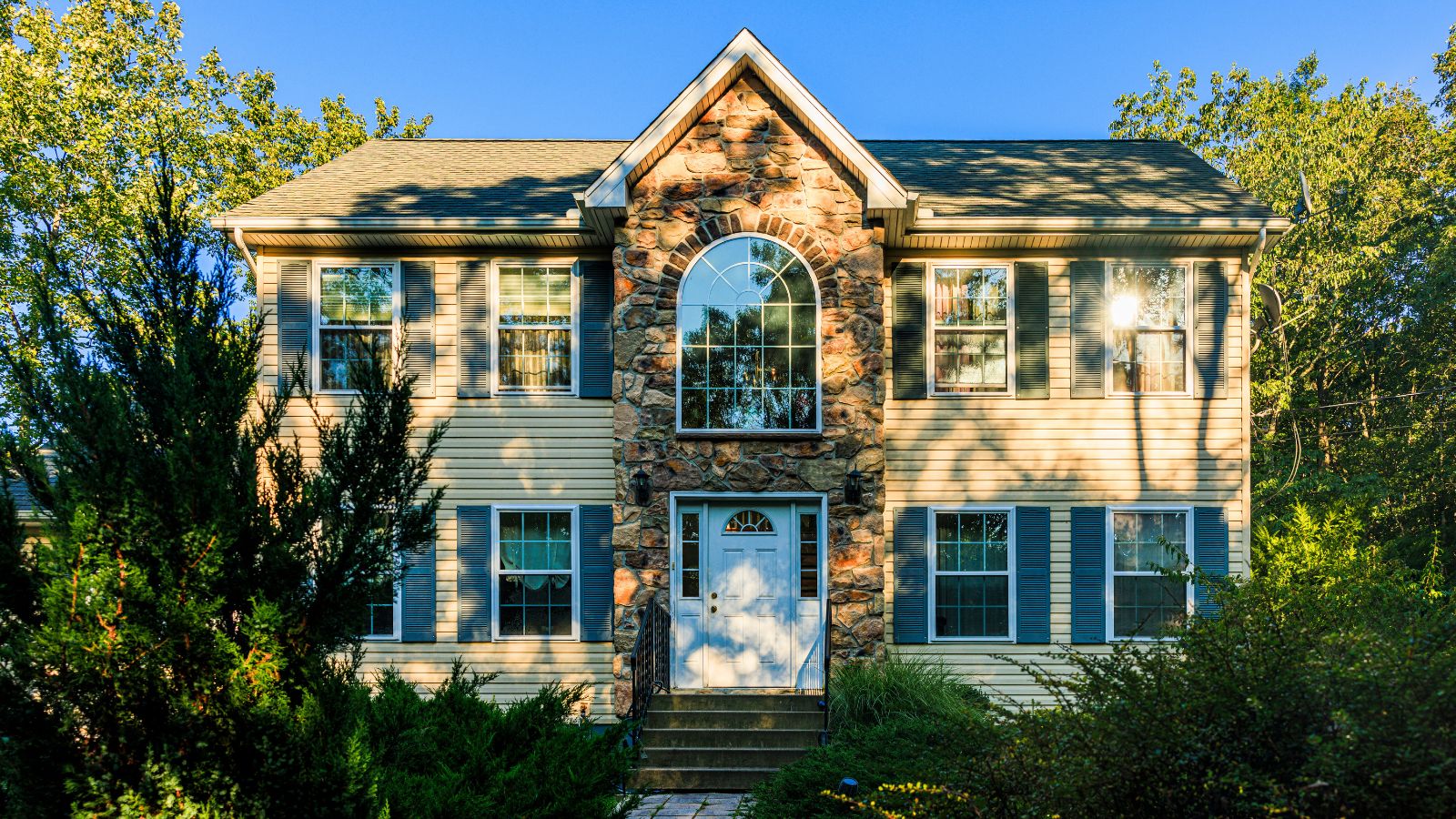 7 questions to ask yourself before moving house – realtors promise answering these questions will prevent buyer's regret
7 questions to ask yourself before moving house – realtors promise answering these questions will prevent buyer's regretDon’t make your move harder, ask these questions before moving to avoid mistakes
By Chiana Dickson
-
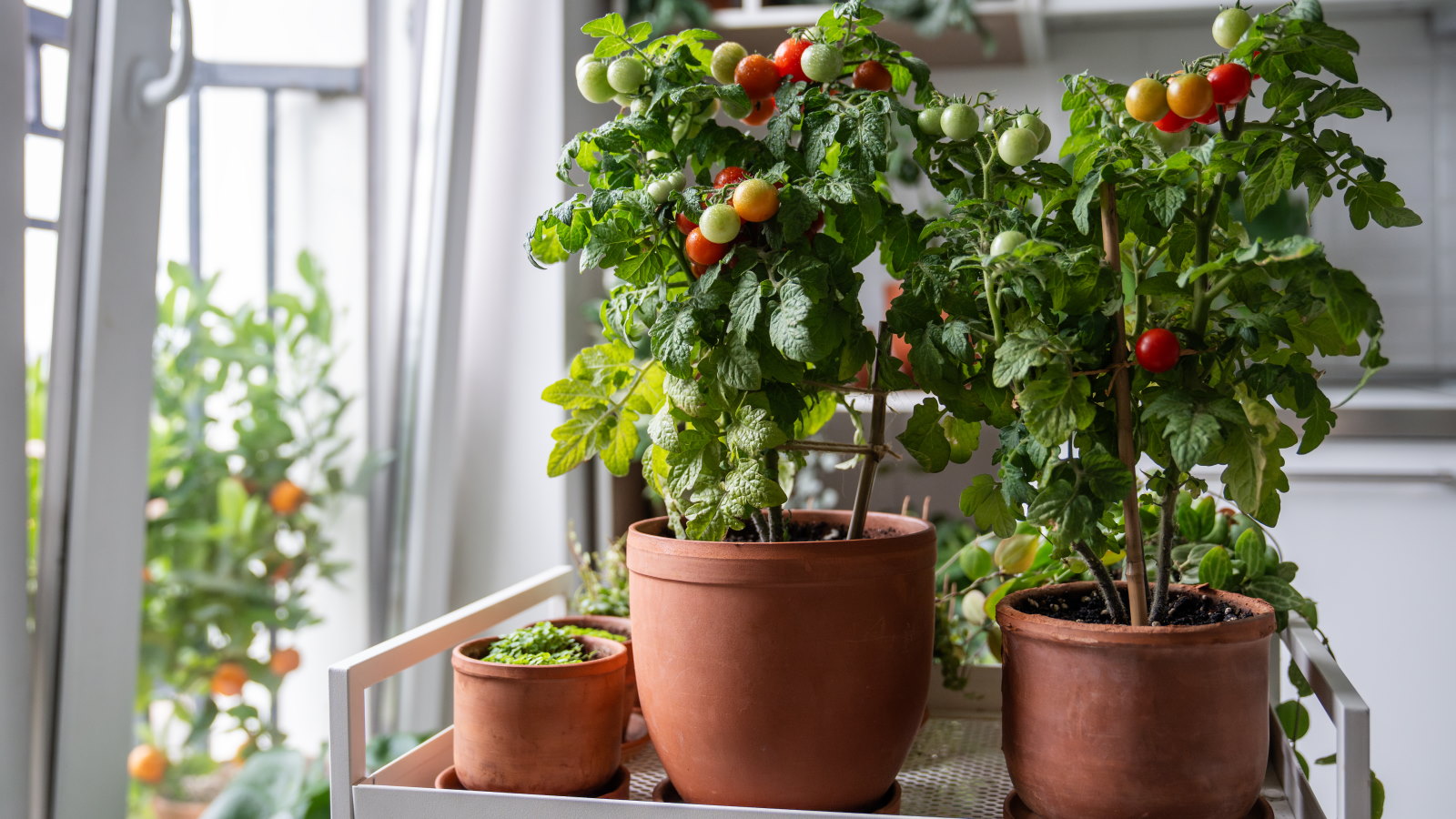 7 of the best tomatoes for growing in pots – expert growers pick their top varieties ideal for large harvests from containers
7 of the best tomatoes for growing in pots – expert growers pick their top varieties ideal for large harvests from containersYou can enjoy bumper homegrown harvests in small spaces
By Drew Swainston
-
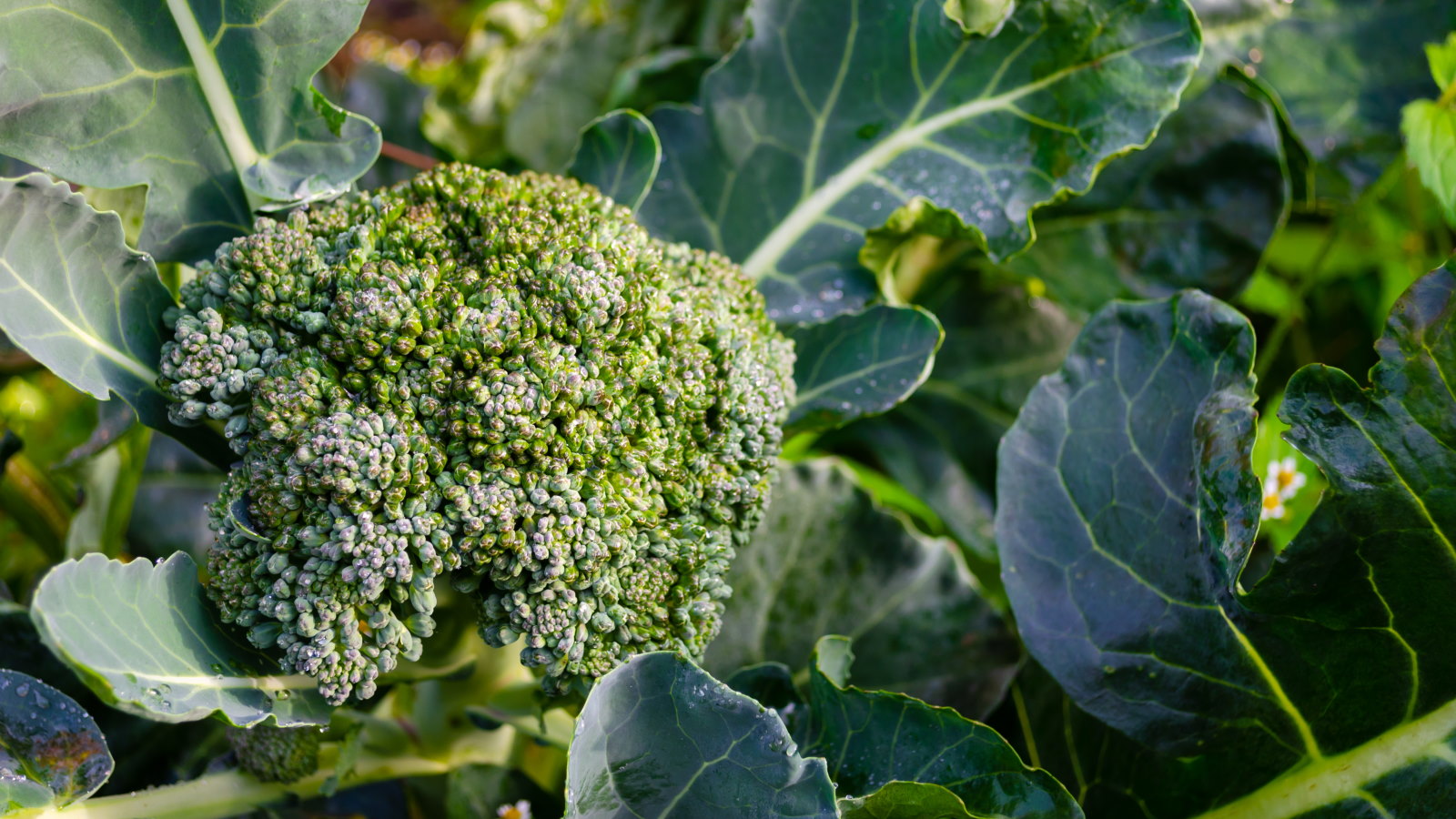 These 5 plants can help you get the best, and potentially tastiest, broccoli ever – discover what to plant with broccoli, and what to avoid
These 5 plants can help you get the best, and potentially tastiest, broccoli ever – discover what to plant with broccoli, and what to avoidOur selection of vegetables, herbs, and flowers is perfect for companion planting with broccoli
By Drew Swainston
-
 How to grow cabbages in containers – expert tips for top harvests in small urban spaces
How to grow cabbages in containers – expert tips for top harvests in small urban spacesYou can grow lots of different cabbages in pots, troughs, grow bags, or buckets
By Drew Swainston
-
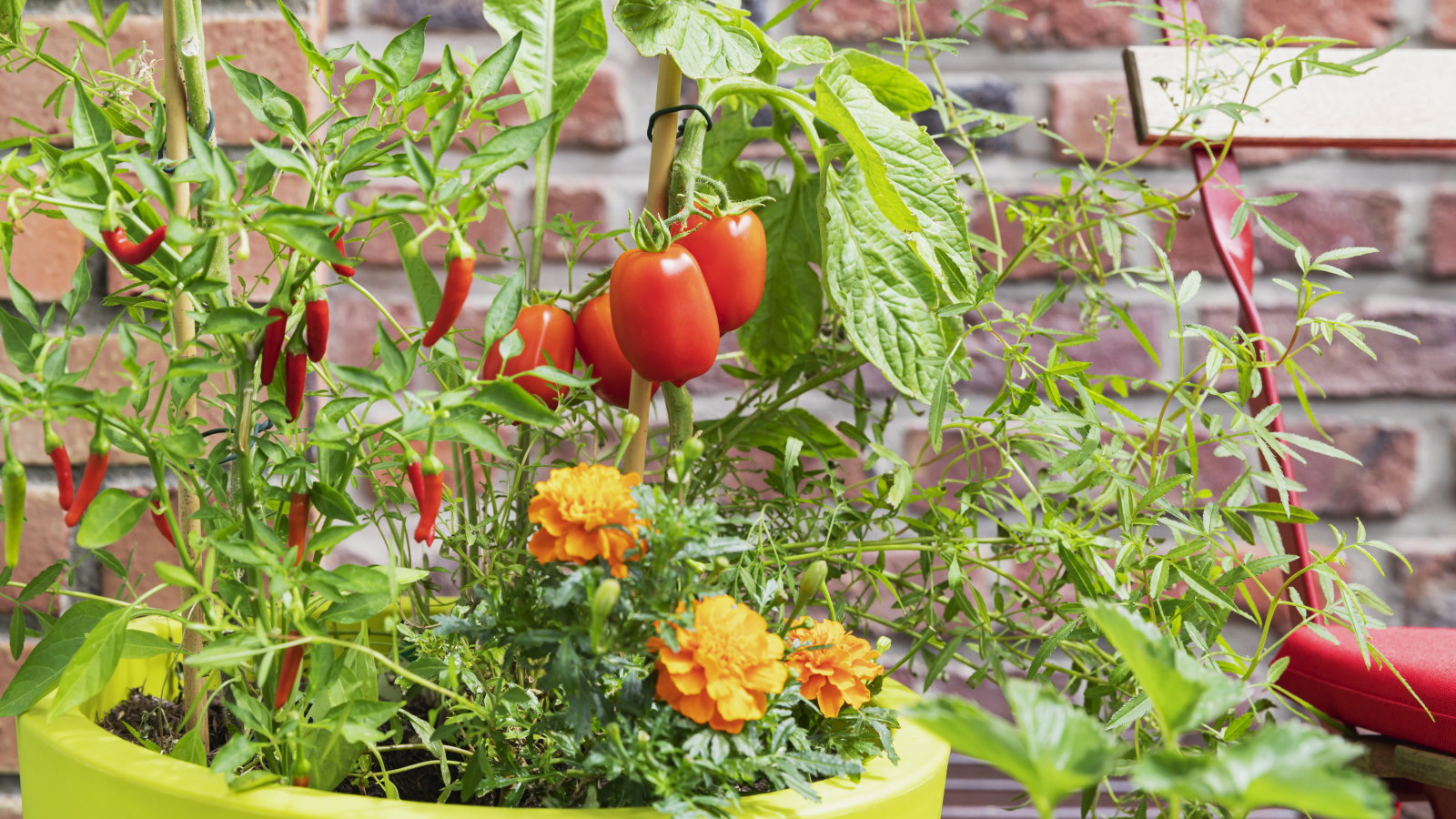 You'll get the best homegrown tomato crops if you plant them next to this one flower – discover why these two are a dream combination
You'll get the best homegrown tomato crops if you plant them next to this one flower – discover why these two are a dream combinationYour tomato plants will be pest-free and covered in fruits
By Drew Swainston
-
 Direct sowing vs transplanting – our grow-your-own expert advises which is best, and shares 5 veggies you should always sow directly
Direct sowing vs transplanting – our grow-your-own expert advises which is best, and shares 5 veggies you should always sow directlyBoth approaches to sowing vegetables have pros and cons
By Drew Swainston
-
 I grew rhubarb from seed for years – here’s exactly how to do it for guaranteed germination and healthy crops of fruit
I grew rhubarb from seed for years – here’s exactly how to do it for guaranteed germination and healthy crops of fruitGrowing rhubarb from seed is a cost-effective way to propagate plants, but it requires care and patience
By Drew Swainston
-
 4 reasons you should plant trees in a vegetable garden – plus experts reveal the secrets to help you reap the rewards
4 reasons you should plant trees in a vegetable garden – plus experts reveal the secrets to help you reap the rewardsSee how agroforestry principles can help boost your soil and harvests
By Drew Swainston
-
 9 of the best vegetables to grow using the square foot gardening method – for big harvests in small spaces
9 of the best vegetables to grow using the square foot gardening method – for big harvests in small spacesPlus how many of each vegetable can be grown per square foot
By Drew Swainston